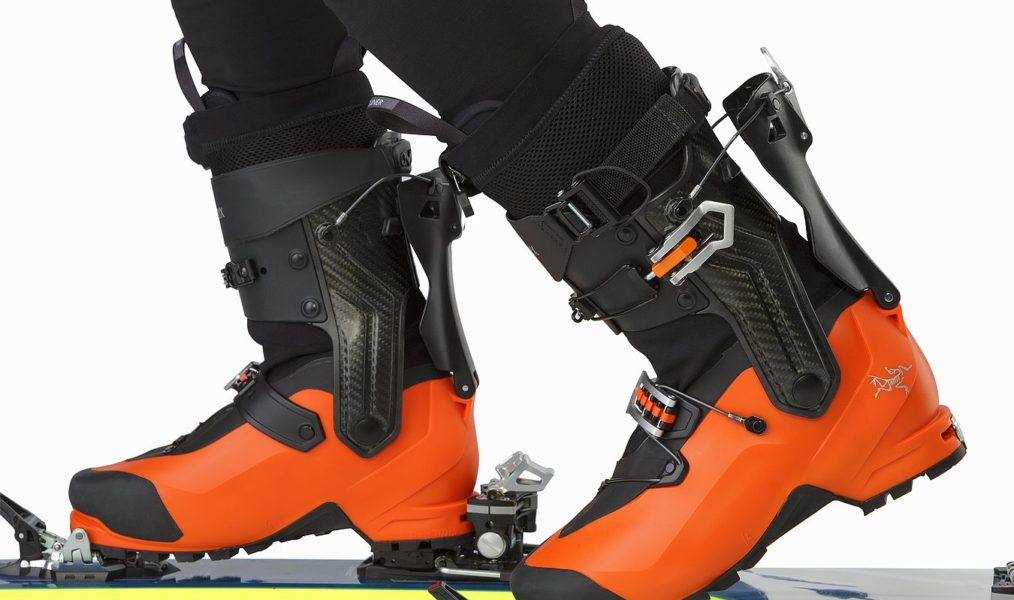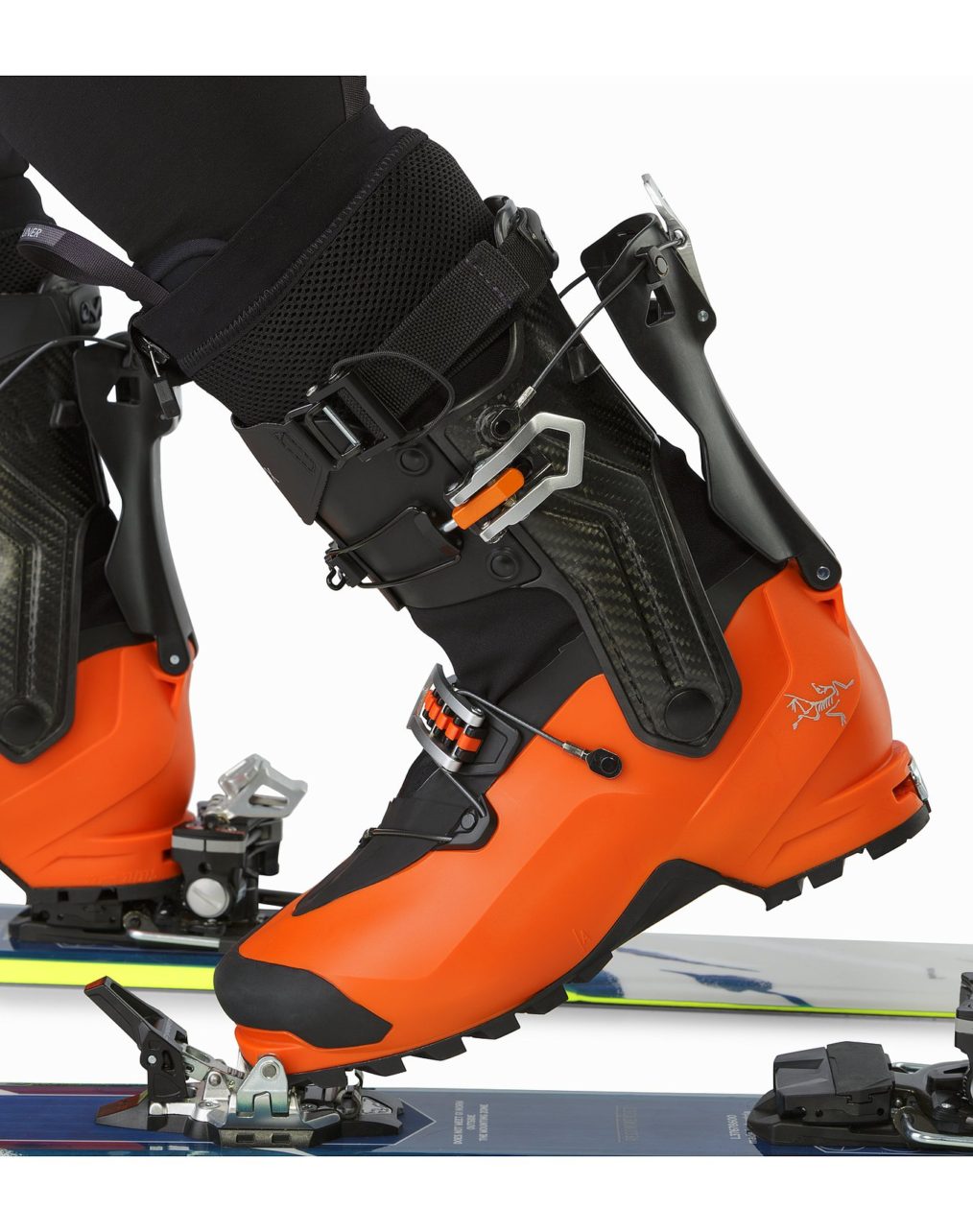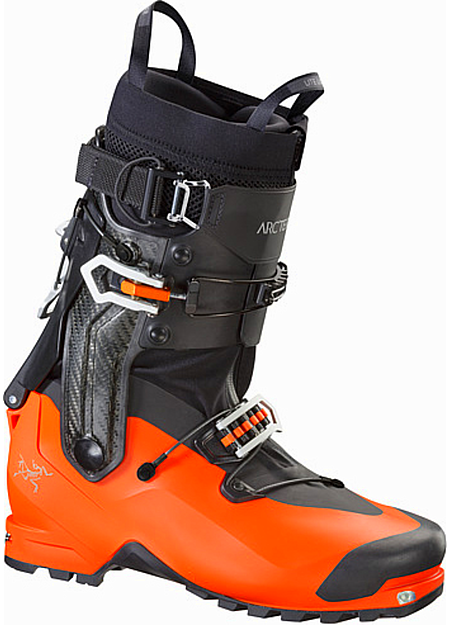A ski boot that climbs, or a climbing boot that skis? We test out Arc’teryx’s
new ski alpinism boot that promises you the best of both worlds...
Arc’teryx’s ever-expanding range of mountain footwear has a new addition this winter in the form of the Procline ski alpinism boot, available in no less than four versions (more of which later). The significance of the Procline is that it is the first climbing boot that you can ski in, or – if you prefer – the first ski boot that you can properly climb in, and the reason it can do both activities well is down to its ‘360 degree rotating cuff’. Essentially the cuff gives you a superb range of vertical motion when in ‘walk’ mode, yet also offers an amount of lateral movement which makes it far more useful for climbing than regular ski boots. Flip it into ski mode and the Procline becomes a dedicated ski touring boot compatible with Dynafit tech bindings and offering enough performance for your backcountry missions.
CHOICES, CHOICES
As mentioned earlier, the Procline comes in four different versions – Procline Carbon Lite, Procline Carbon Support, Procline Lite and Procline Support. The ‘carbon’ refers to the construction of the cuff (the non-carbon versions are made of Grimalad), while the ‘lite’ and ‘support’ refers to the removable liners supplied with the boots. ‘Lite’ liners are intended for those who will be skinning and climbing more, and the ‘support’ liner is intended for those who will be skiing more. Of course you can buy both and use whichever one is most appropriate for your day’s activities. The Procline also comes in one, women-specific model – the Procline Support Boot Women’s – which comes in an appealing lime-green.
Starting from the bottom of the boot, the Procline sports a Vibram dual-compound outsole which has a specially-designed tread pattern for improved edge control, heel braking and smearing while climbing, and is slightly rockered at the back to aid walking. There’s also a strip of rubber around the top of the toes for extra grip when climbing. The boot has two buckles which are low-profile in order not to impede climbing, while a third point of closure is provided by the power strap which, eschewing the common use of Veclro, uses a clever system that makes tightening and loosening the strap quick and easy. A zip-up gaiter made from Cordura with a waterproof PVC coating seals out snow. Then there’s the rotating cuff, the key element of the Procline boot. Like other ski touring boots, a lever on the back changes the boot from ski to walk mode, but unlike other boots the cuff at the back is split into two, with the two parts moving slightly apart when loosened off, giving you some lateral movement (as well as vertical movement).
IN USE
We tested the Procline alongside the popular Scarpa Maestrale, to see how it compared to a standard ski touring boot, and used it over a period of several weeks ski touring and climbing in the Alps. The first thing to notice is how light and comfortable it is. The Proclines are right at the lighter end of the ski touring boot market, with a size 27.5 weighing in at 1242g per boot, compared to the Maestrale at 1643g per boot. The boot has a lower volume too, with its low profile design making it feel more nimble and precise when climbing. The EVA liner is thermoformable, yet straight out of the box the boots felt really good.
Switching between walk and ski modes was easy enough once we realised that leaning forward when engaging ski mode made the process much easier. In walk mode, the range of motion vertically (i.e. backwards and forwards) is huge. The Procline had a similar amount of backwards movement (-250) as the Maestrale but considerably more forwards movement (+500). Not only that, the motion is very smooth and virtually silent, unlike the more creaky-sounding motion of other ski touring boots. The amount of lateral movement is not huge – 230 internally and 120 externally – yet we found this made a considerable difference when taking the skis off and switching to climbing. This lateral flexibility is appreciated when walking on snow slopes, being able to more easily keep the boots flat on the slope on traverses. This is also useful when skinning up, since it’s easier to keep the skis flat on the snow, and therefore get more traction.
The cuff of the boot is lower than most ski boots, and again this gives more freedom of movement when moving on rock or ice. We found that the Procline held our heels firmly in place, but had space where you need it – we had room to wiggle our toes, for example. Overall we loved using the Procline and would be happy using it purely as a ski boot. Add in its climbing capabilities, however, and you have a boot that we feel is sure to attract plenty of devotees.
















